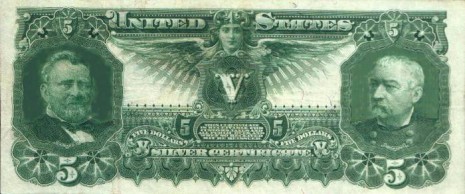In honor of the U.S. Treasury’s recent announcement that it plans to put a picture of a woman (gasp) on the ten-dollar bill by the end of this year, I thought I would repost this blog I wrote a couple of years ago, about a cool chapter in the history of American currency.
In 1896, the the Bureau of Engraving and Printing redesigned the U.S. paper money. Four artists were chosen to design the new bills, and the results were pretty spectacular. Instead of showing U.S. Presidents (and Founding Fathers), the new bills were neoclassical allegories.
Sadly, though, when President Cleveland chose not to run again in 1896, his Treasury Secretary retired and was replaced by a new Secretary, Lyman Gage. Gage, a banker by training, held a dim view of the artsy new currency designs, holding that paper bills should be practical, not artistic. Gage cancelled the new currency designs, and it went back to looking more or less the way the modern bills do.
But for almost a year, we had some awesome looking bills. Here’s the one-dollar bill. It shows History (the woman reclining) instructing a student (I’m not sure why he’s nearly naked) and pointing toward an open book showing the US Constitution. And the Washington DC skyline is in the background.
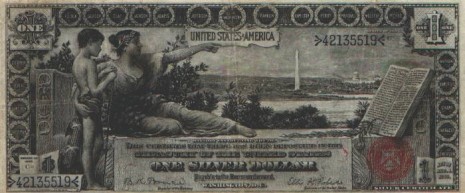 Here’s the back of the one-dollar bill. It shows George and Martha Washington (there’s a refreshing concept!):
Here’s the back of the one-dollar bill. It shows George and Martha Washington (there’s a refreshing concept!):
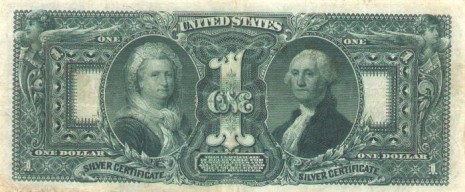 Here’s the two-dollar bill. The central figure is Science, and she is introducing Steam and Electricity (the two kids) to Commerce and Manufacture.
Here’s the two-dollar bill. The central figure is Science, and she is introducing Steam and Electricity (the two kids) to Commerce and Manufacture.
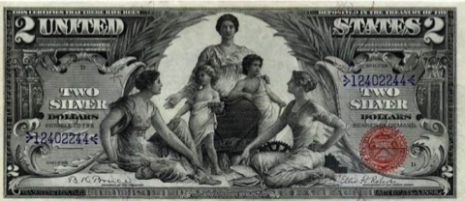 On the back we see Robert Fulton (inventor of the steam engine) and Samuel Morse (inventor of the telegraph).
On the back we see Robert Fulton (inventor of the steam engine) and Samuel Morse (inventor of the telegraph).
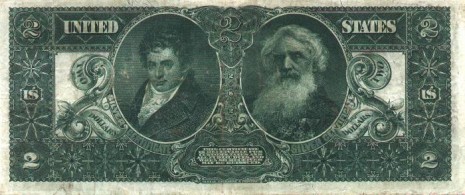
And here’s the glorious five-dollar bill. It shows Electricity presenting Light to the World, surrounded by Strength, Fame, and Peace. Although most people loved it, bankers objected to the fact that the numbers on the back of the note weren’t in the corners, making it hard for bank tellers to count money, and religious groups and society ladies objected to Electricity’s nudity and campaigned to recall the bills. So the Treasury promised to move the numbers to the corners, and the artist promised to put more clothing on Electricity for the next printing. (There was no next printing.)
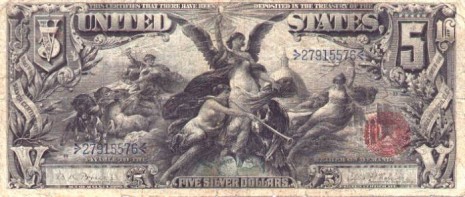
Here’s the back of the fiver, where you see that the numbers aren’t very readable. And yes, those are two Union generals, Ulysses S. Grant and Philip Sheridan, with Liberty between them. This design was probably not so popular in the South.
